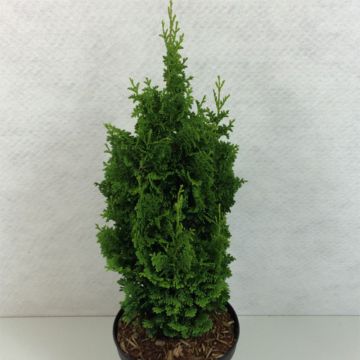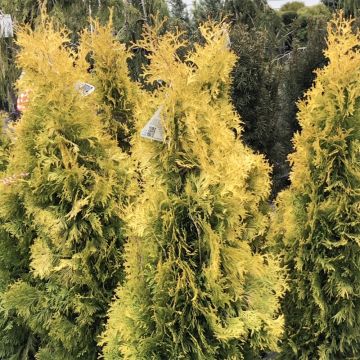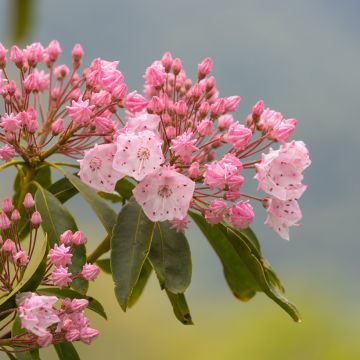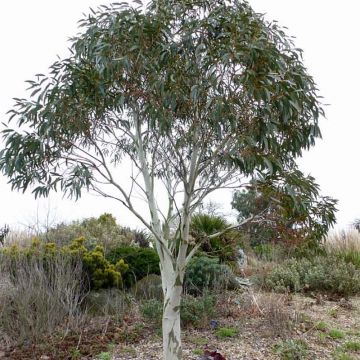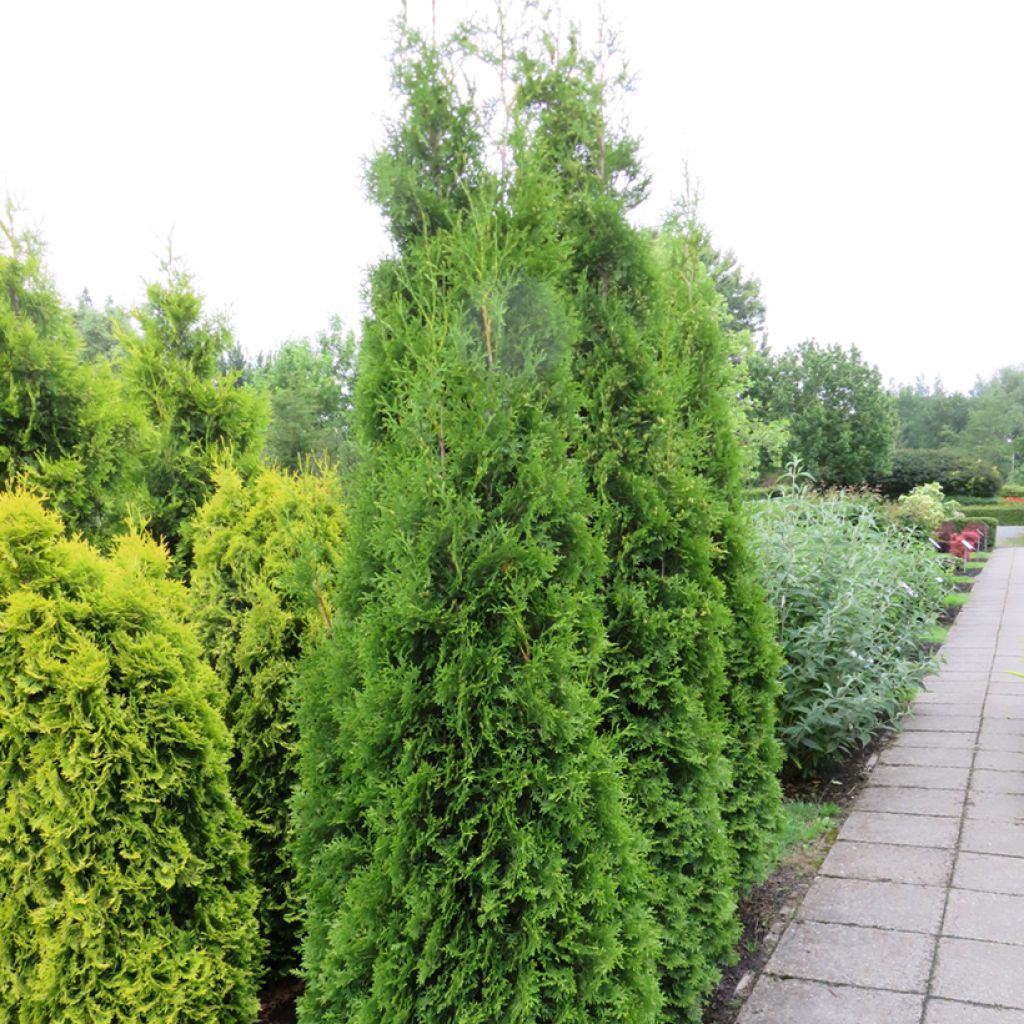

Thuja occidentalis King of Brabant - Eastern White Cedar
Thuja occidentalis King of Brabant - Eastern White Cedar
Thuja occidentalis King of Brabant®
Eastern White Cedar, Northern White Cedar, American Arborvitae, Eastern Arborvitae
Special offer!
Receive a €20 voucher for any order over €90 (excluding delivery costs, credit notes, and plastic-free options)!
1- Add your favorite plants to your cart.
2- Once you have reached €90, confirm your order (you can even choose the delivery date!).
3- As soon as your order is shipped, you will receive an email containing your voucher code, valid for 3 months (90 days).
Your voucher is unique and can only be used once, for any order with a minimum value of €20, excluding delivery costs.
Can be combined with other current offers, non-divisible and non-refundable.
Home or relay delivery (depending on size and destination)
Schedule delivery date,
and select date in basket
This plant carries a 24 months recovery warranty
More information
We guarantee the quality of our plants for a full growing cycle, and will replace at our expense any plant that fails to recover under normal climatic and planting conditions.
Would this plant suit my garden?
Set up your Plantfit profile →
Description
The Canadian Arborvitae or Thuja occidentalis 'King of Brabant' is a different form of the well-known variety 'Brabant'. A strongly upright habit distinguishes it, more conical, taller and less narrow, and a bronze colouration of the foliage in winter. It is also undemanding and vigorous. It provides a good hedge subject and an excellent standalone conifer to plant, as the growth of all its shoots is very erect, so the shape is naturally harmonious. Suitable for almost all our regions, its cultivation presents no difficulty and tolerates pruning ideally.
The Thuja occidentalis, the Canadian Arborvitae or Western Red Cedar, is sometimes called the White Cedar of Canada or Broom. It is an evergreen conifer of the cypress family native to northeastern North America. It is distributed over a wide geographical area that perfectly reflects the plasticity of its living conditions, from swamps to cliffs. In nature, it reaches a height of 15 to 20 m, adopting a beautiful conical habit and a trunk covered with decorative bark that peels off in reddish-brown plates. It is a very hardy species, well adapted to temperate climates and poor, moist, or occasionally dry soils. Its almost rot-resistant, lightweight, fragrant, and easily flammable wood lends itself to many uses. More than 300 cultivars have been selected for their ornamental qualities.
The variety 'King of Brabant' reaches 5 to 7 m in height and 2 to 3 m in width at ten years old, with a regular conical habit. When crushed, this extremely resistant conifer reveals particularly aromatic foliage of flattened branches covered with 3 to 5-mm long scales. Overlapping each other, the leaves give the twigs a flat appearance. The young shoots are yellow-green in spring, gradually taking on their definitive colour, a relatively light green. In winter, the foliage takes on a bronze colour. The cones, slender and brown when ripe, are formed by 4 or 5 scales.
The 'King of Brabant' Western Red Cedar harmoniously integrates into various gardens, whether spacious or more modest. Its ease of maintenance, once acclimated, makes it a preferred choice for gardeners looking for simple and practical solutions to enhance their outdoor space. The foliage of this plant brings a touch of dense and vibrant greenery throughout the year, a beautiful backdrop for compositions of perennials and flowering shrubs. Its texture and colour blend perfectly with wilder garden elements, as well as with architectural structures. It proves to be an excellent choice for creating windbreak hedges. Its graphic appearance and structural qualities make it particularly suitable for contemporary gardens. This plant can easily replace species traditionally used to structure the garden, such as trimmed boxwood or holly, allowing for playing with volumes and shades of green to create visually captivating compositions.
Report an error about the product description
Thuja occidentalis King of Brabant - Eastern White Cedar in pictures


Plant habit
Foliage
Botanical data
Thuja
occidentalis
King of Brabant®
Cupressaceae
Eastern White Cedar, Northern White Cedar, American Arborvitae, Eastern Arborvitae
Cultivar or hybrid
Other Thuya - Thuja
View all →Planting and care
Thuja occidentalis, 'King of Brabant', can be planted from September to November and from February to June in deep, ordinary, loose soil that is not too heavy, acidic, neutral or even slightly chalky but still cool. It only fears scorching temperatures and prolonged drought. However, it does need a sunny or semi-shady spot to grow well. Soak the clumps well before planting. If necessary, add an organic amendment at planting and water copiously in the first few years in the event of prolonged drought. In very poor soil, you can apply a special conifer fertiliser every April and hoe the soil in summer. This very hardy conifer (down to at least -25°C) bears pruning well.
Planting period
Intended location
Care
This item has not been reviewed yet - be the first to leave a review about it.
Similar products
Haven't found what you were looking for?
Hardiness is the lowest winter temperature a plant can endure without suffering serious damage or even dying. However, hardiness is affected by location (a sheltered area, such as a patio), protection (winter cover) and soil type (hardiness is improved by well-drained soil).

Photo Sharing Terms & Conditions
In order to encourage gardeners to interact and share their experiences, Promesse de fleurs offers various media enabling content to be uploaded onto its Site - in particular via the ‘Photo sharing’ module.
The User agrees to refrain from:
- Posting any content that is illegal, prejudicial, insulting, racist, inciteful to hatred, revisionist, contrary to public decency, that infringes on privacy or on the privacy rights of third parties, in particular the publicity rights of persons and goods, intellectual property rights, or the right to privacy.
- Submitting content on behalf of a third party;
- Impersonate the identity of a third party and/or publish any personal information about a third party;
In general, the User undertakes to refrain from any unethical behaviour.
All Content (in particular text, comments, files, images, photos, videos, creative works, etc.), which may be subject to property or intellectual property rights, image or other private rights, shall remain the property of the User, subject to the limited rights granted by the terms of the licence granted by Promesse de fleurs as stated below. Users are at liberty to publish or not to publish such Content on the Site, notably via the ‘Photo Sharing’ facility, and accept that this Content shall be made public and freely accessible, notably on the Internet.
Users further acknowledge, undertake to have ,and guarantee that they hold all necessary rights and permissions to publish such material on the Site, in particular with regard to the legislation in force pertaining to any privacy, property, intellectual property, image, or contractual rights, or rights of any other nature. By publishing such Content on the Site, Users acknowledge accepting full liability as publishers of the Content within the meaning of the law, and grant Promesse de fleurs, free of charge, an inclusive, worldwide licence for the said Content for the entire duration of its publication, including all reproduction, representation, up/downloading, displaying, performing, transmission, and storage rights.
Users also grant permission for their name to be linked to the Content and accept that this link may not always be made available.
By engaging in posting material, Users consent to their Content becoming automatically accessible on the Internet, in particular on other sites and/or blogs and/or web pages of the Promesse de fleurs site, including in particular social pages and the Promesse de fleurs catalogue.
Users may secure the removal of entrusted content free of charge by issuing a simple request via our contact form.
The flowering period indicated on our website applies to countries and regions located in USDA zone 8 (France, the United Kingdom, Ireland, the Netherlands, etc.)
It will vary according to where you live:
- In zones 9 to 10 (Italy, Spain, Greece, etc.), flowering will occur about 2 to 4 weeks earlier.
- In zones 6 to 7 (Germany, Poland, Slovenia, and lower mountainous regions), flowering will be delayed by 2 to 3 weeks.
- In zone 5 (Central Europe, Scandinavia), blooming will be delayed by 3 to 5 weeks.
In temperate climates, pruning of spring-flowering shrubs (forsythia, spireas, etc.) should be done just after flowering.
Pruning of summer-flowering shrubs (Indian Lilac, Perovskia, etc.) can be done in winter or spring.
In cold regions as well as with frost-sensitive plants, avoid pruning too early when severe frosts may still occur.
The planting period indicated on our website applies to countries and regions located in USDA zone 8 (France, United Kingdom, Ireland, Netherlands).
It will vary according to where you live:
- In Mediterranean zones (Marseille, Madrid, Milan, etc.), autumn and winter are the best planting periods.
- In continental zones (Strasbourg, Munich, Vienna, etc.), delay planting by 2 to 3 weeks in spring and bring it forward by 2 to 4 weeks in autumn.
- In mountainous regions (the Alps, Pyrenees, Carpathians, etc.), it is best to plant in late spring (May-June) or late summer (August-September).
The harvesting period indicated on our website applies to countries and regions in USDA zone 8 (France, England, Ireland, the Netherlands).
In colder areas (Scandinavia, Poland, Austria...) fruit and vegetable harvests are likely to be delayed by 3-4 weeks.
In warmer areas (Italy, Spain, Greece, etc.), harvesting will probably take place earlier, depending on weather conditions.
The sowing periods indicated on our website apply to countries and regions within USDA Zone 8 (France, UK, Ireland, Netherlands).
In colder areas (Scandinavia, Poland, Austria...), delay any outdoor sowing by 3-4 weeks, or sow under glass.
In warmer climes (Italy, Spain, Greece, etc.), bring outdoor sowing forward by a few weeks.





































